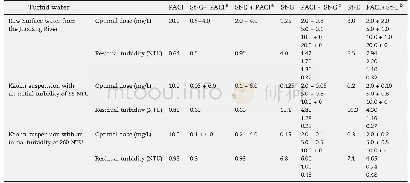《Table 4Comparison of the OER performances of various one‐dimensional nanostructured materials.》
MA:mass activity.
Furthermore,the carbon fiber paper substrate helps to im‐prove the stability and conductivity of materials.The Ni Co O2NWs can undergo 12 h of continuous operation without exhib‐iting an obvious drop in the current density.Meanwhile,Fe doping is also a feasible strategy to further promote the cata‐lytic activities of Ni‐based catalysts for the OER[127].Zhang et al.[128]designed and synthesized a unique mesoporous NiFeO NW network structure.One structure of Ni2Fe1O showed a rel‐atively low overpotential(η10=244 m V)and excellent long‐term stability(60 h,with negligible degradation)for the OER in 1 M KOH.In particular,the Nix Fey O NWs with various Ni:Fe ratios exhibited different performances:Ni2Fe1O(η10=244 mV)>Ni1.5Fe1.5O(η10=290 mV)>Ni1Fe2O(η10=316 mV)>Ir O2(η10=339 mV).The results suggest that a high Ni content can increase the electron transport capability and facilitate the OER process to a great extent.Besides,the obtained results are in good agreement with the previously reported results of maximum OER activity for Fe‐doped NiOOH when the concen‐tration of Fe is as high as 35%[139].In another study,Zhang et al.[129]synthesized an advanced porous Mo‐doped NiFeO NW catalyst.Compared with the Nix Fey O NWs,the Mo‐doped NiFeO NWs exhibited enhanced OER activity,with a small overpoten‐tial(η10=231 mV)in 1 M KOH.For the Mo‐doped NiFeO NWs,the outstanding catalytic properties observed can be attributed to a well‐designed heteroatom‐doped porous NW network,an enlarged active surface area,the synergistic effect between Mo and NiFe,and the enhanced electrical conductivity.Overall,the following factors may have an influence on the OER perfor‐mances of the catalysts:(1)composition;(2)crystal structure or shape;(3)electrical conductivity;and(4)hierarchical po‐rous structure and the surface chemical states of the metals.
| 图表编号 | XD0028863700 严禁用于非法目的 |
|---|---|
| 绘制时间 | 2019.01.01 |
| 作者 | 李苹、陈卫 |
| 绘制单位 | 中国科学院长春应用化学研究所电分析化学国家重点实验室、中国科学技术大学应用化学与工程学院、中国科学院长春应用化学研究所电分析化学国家重点实验室、中国科学技术大学应用化学与工程学院 |
| 更多格式 | 高清、无水印(增值服务) |
查看“Table 4Comparison of the OER performances of various one‐dimensional nanostructured materials.”的人还看了
-

- Table 1 The performance parameters of ternary PSCs with various mass ratios of donors under 100 mW cm-2AM 1.5 G irradiat
 提示:宽带有限、当前游客访问压缩模式
提示:宽带有限、当前游客访问压缩模式





